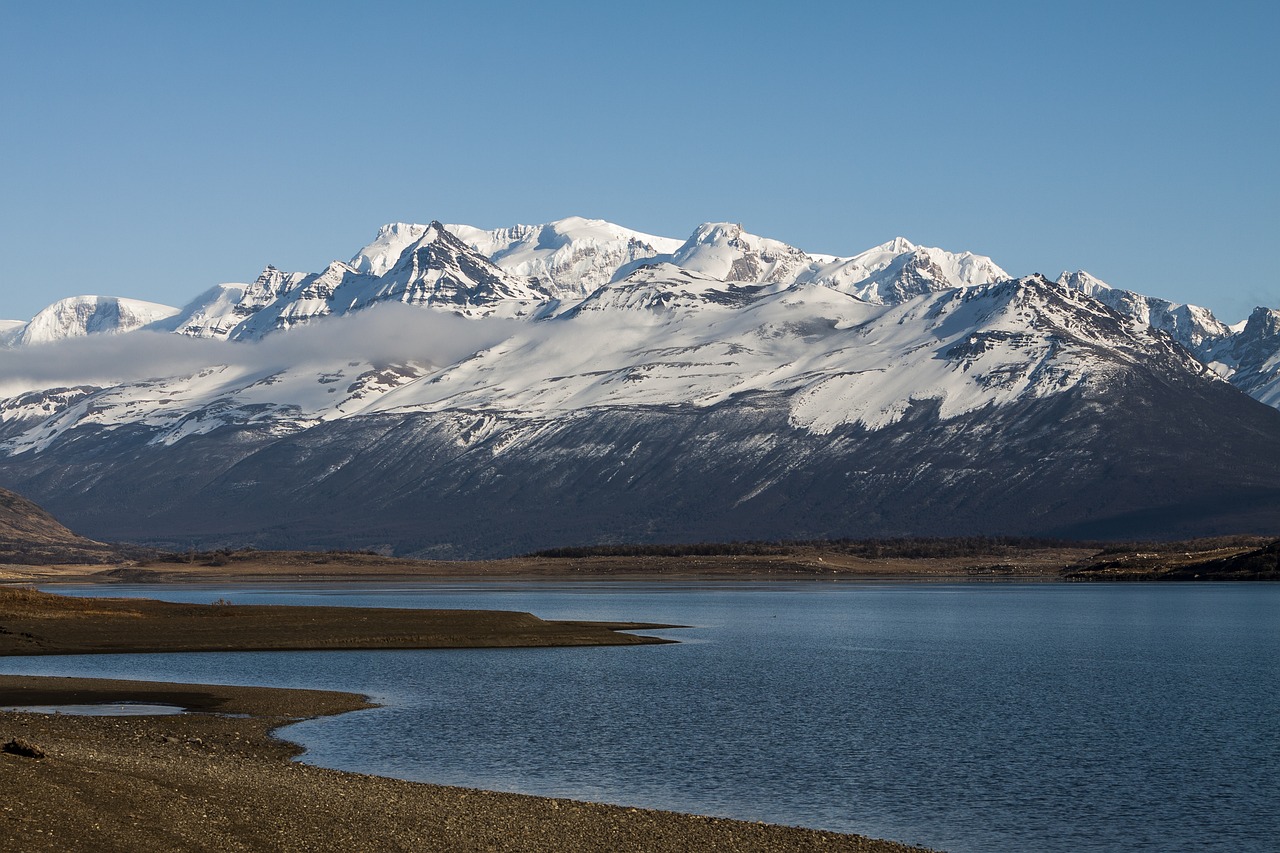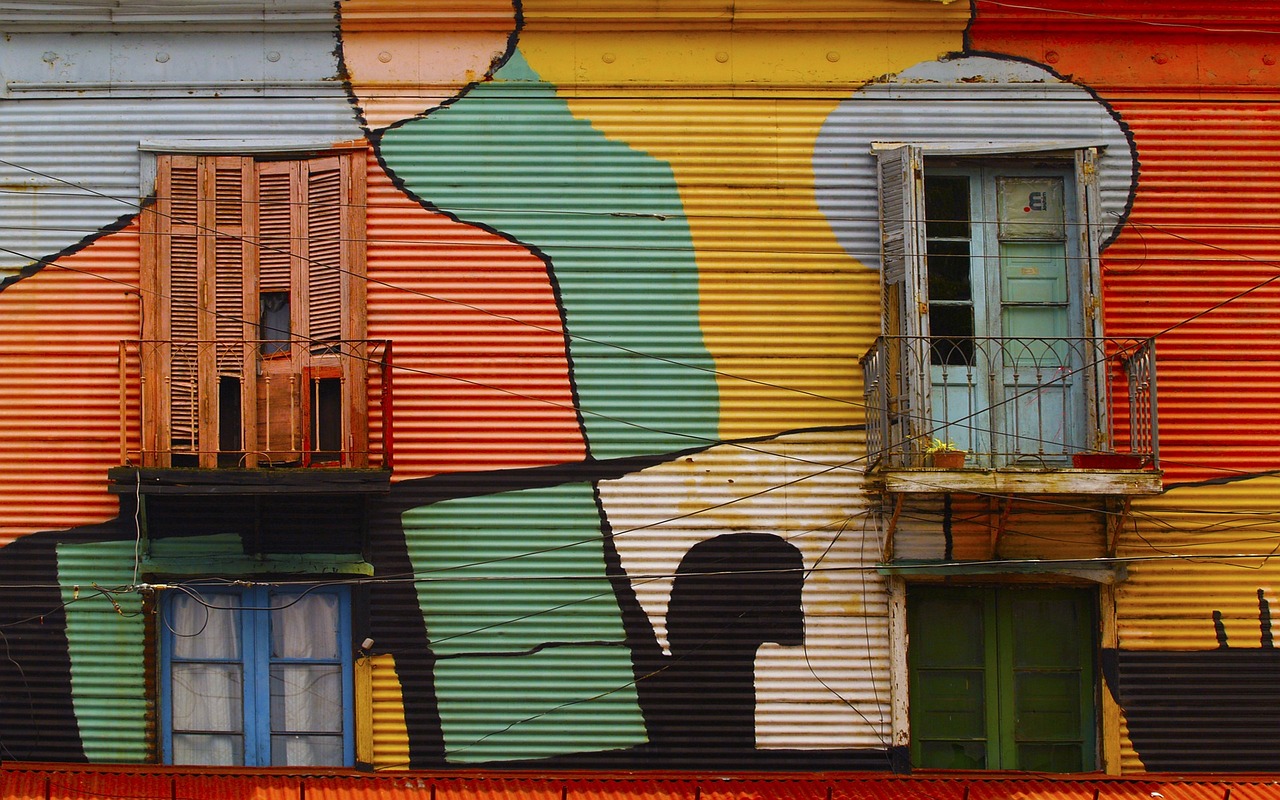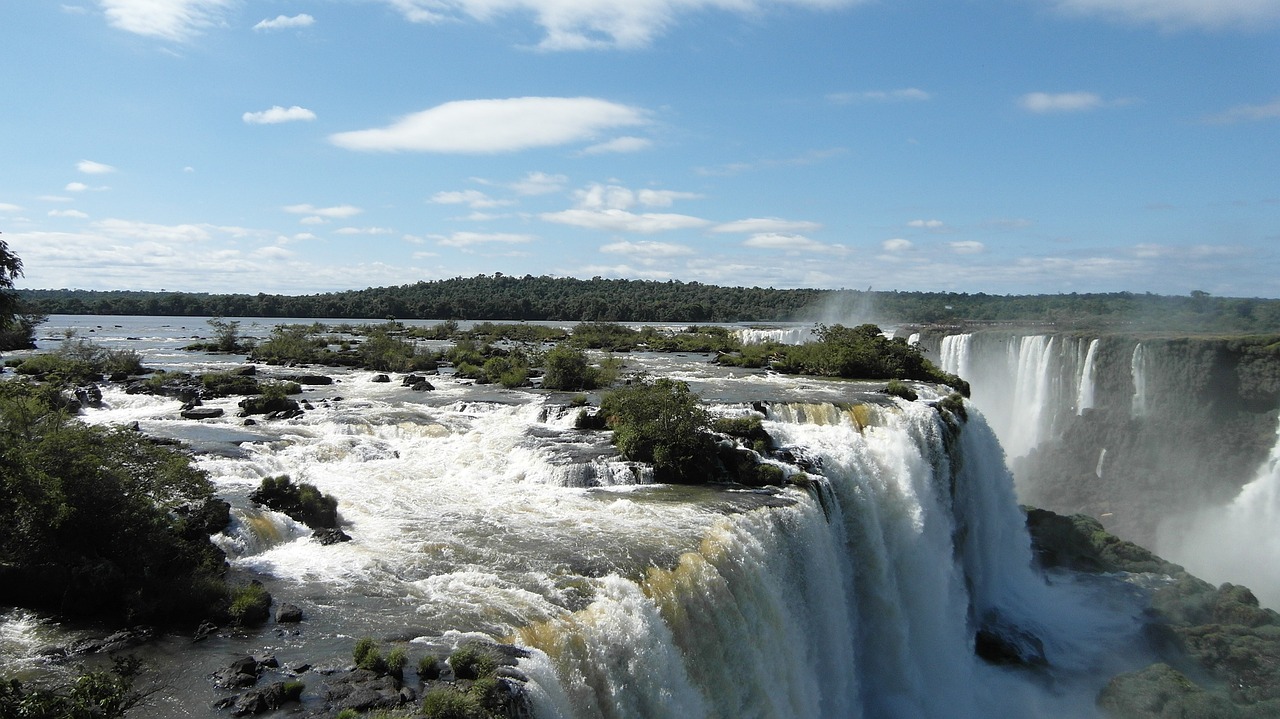Exploring the Stunning Landscapes of Patagonia: A Journey Through Argentina’s Natural Wonder
Patagonia, located in the southern region of Argentina, is a land of breathtaking beauty and awe-inspiring landscapes. From towering mountains to pristine lakes and massive glaciers, this natural wonderland offers a truly unforgettable experience for adventurers and nature lovers alike. In this article, we will take you on a journey through Patagonia, exploring its stunning landscapes and uncovering the unique features that make it a must-visit destination.
Section 1: The Majestic Andes Mountains
The Andes Mountains, stretching along the western border of Argentina, dominate the Patagonian landscape with their majestic presence. These towering peaks, including the iconic Mount Fitz Roy and Cerro Torre, offer unparalleled opportunities for hiking, mountaineering, and photography. The jagged ridges and snow-capped summits create a dramatic backdrop that will leave you in awe.
- Mount Fitz Roy: With its distinctive granite spires, Mount Fitz Roy is a symbol of Patagonia’s natural beauty. Hiking to its base offers breathtaking views of the surrounding glaciers and crystal-clear lakes.
- Cerro Torre: Known for its challenging climbing routes, Cerro Torre attracts experienced mountaineers from around the world. Its unique rock formations and icy peaks make it a must-see for adventure enthusiasts.
- Perito Moreno Glacier: One of the most famous glaciers in the world, Perito Moreno is a massive ice formation that stretches over 250 square kilometers. Witnessing the thunderous calving of ice chunks into the turquoise waters of Lake Argentino is a truly unforgettable experience.
Section 2: The Enchanting Lakes of Patagonia
Patagonia is blessed with an abundance of pristine lakes, each with its own unique charm. Surrounded by snow-capped mountains and lush forests, these lakes offer a tranquil retreat for visitors seeking peace and serenity.
- Lake Nahuel Huapi: Located in the heart of the Andes, Lake Nahuel Huapi is the largest and arguably the most beautiful lake in Patagonia. Its crystal-clear waters reflect the surrounding mountains, creating a mesmerizing sight.
- Lago Argentino: As the largest freshwater lake in Argentina, Lago Argentino is a popular destination for boat tours and fishing. Its proximity to the Perito Moreno Glacier adds to its allure, offering a unique combination of icy landscapes and serene waters.
- Lake Puelo: Nestled in the Andean foothills, Lake Puelo is known for its emerald-green waters and picturesque surroundings. It is a haven for kayaking, fishing, and camping, providing a peaceful escape from the hustle and bustle of city life.
Section 3: The Mesmerizing Glaciers of Patagonia
Patagonia is home to some of the most impressive glaciers in the world. These massive ice formations are constantly shifting and evolving, creating a mesmerizing spectacle for visitors.
- Upsala Glacier: Located in Los Glaciares National Park, the Upsala Glacier is one of the largest glaciers in South America. Its immense size and striking blue hues make it a sight to behold.
- Viedma Glacier: Another stunning glacier in Los Glaciares National Park, the Viedma Glacier offers opportunities for ice trekking and ice climbing. Exploring its icy caves and crevasses is a thrilling adventure.
- Grey Glacier: Situated in Torres del Paine National Park, Grey Glacier is a vast ice field that stretches as far as the eye can see. Witnessing its immense size and the calving of icebergs is an awe-inspiring experience.
Argentina Image 1:
Given the source URL: “https://gypsywarrior.com/wp-content/uploads/2569950.jpg” and the alternative text “Argentina”, generate an HTML img tag:

Section 4: The Pristine National Parks
Patagonia is home to numerous national parks that preserve its natural beauty and diverse ecosystems. These protected areas offer endless opportunities for hiking, wildlife spotting, and immersing oneself in nature.
- Tierra del Fuego National Park: Located at the southernmost tip of South America, Tierra del Fuego National Park is a pristine wilderness teeming with unique flora and fauna. Explore its trails and be captivated by the rugged beauty of the region.
- Los Glaciares National Park: Spanning over 600,000 hectares, Los Glaciares National Park is a UNESCO World Heritage site renowned for its glaciers, lakes, and towering peaks. The park offers a range of activities, from glacier hikes to boat tours.
- Torres del Paine National Park: Considered one of the most spectacular national parks in the world, Torres del Paine is a paradise for outdoor enthusiasts. Its iconic granite towers, turquoise lakes, and abundant wildlife make it a must-visit destination.
Section 5: The Fascinating Wildlife
Patagonia is home to a diverse array of wildlife, including unique species that have adapted to the harsh conditions of the region. From guanacos and pumas to Magellanic penguins and Andean condors, the wildlife of Patagonia will leave you in awe.
- Guanaco: A relative of the llama, the guanaco is a common sight in Patagonia. These graceful animals can be spotted grazing in the grasslands and foothills of the region.
- Puma: Also known as the mountain lion, the puma is a top predator in Patagonia. Spotting one of these elusive cats in the wild is a rare and thrilling experience.
- Magellanic Penguin: The coasts of Patagonia are home to colonies of Magellanic penguins. Watching these adorable creatures waddle along the beach is a delight for visitors of all ages.
Section 6: The Gauchos and their Culture
The gauchos, skilled horsemen and cattle herders, are an integral part of Patagonian culture. Their traditional way of life and rich folklore offer a glimpse into the region’s history and heritage.
- Traditional Gaucho Festivals: Throughout the year, traditional gaucho festivals are held in various towns and villages of Patagonia. These events showcase gaucho skills, such as horseback riding, lassoing, and traditional folk music.
- Estancias: Stay at an estancia, a traditional Patagonian ranch, and immerse yourself in gaucho culture. Experience horseback riding, sheep herding, and enjoy traditional Argentine cuisine.
- Traditional Crafts: Visit local artisans and learn about traditional gaucho crafts, such as leatherwork and silver jewelry making. These crafts are deeply rooted in Patagonian culture and reflect the region’s unique heritage.
Argentina Image 2:
Given the source URL: “https://gypsywarrior.com/wp-content/uploads/50076.jpg” and the alternative text “Argentina”, generate an HTML img tag:

Section 7: The Charming Towns and Cities
Patagonia is dotted with charming towns and cities that offer a warm welcome to visitors. These vibrant communities showcase the fusion of indigenous, European, and gaucho cultures that define the region.
- Bariloche: Known as the “Switzerland of Argentina,” Bariloche is a picturesque town nestled in the Andes. Its alpine architecture, chocolate shops, and stunning lake views make it a popular destination year-round.
- El Calafate: Gateway to the Perito Moreno Glacier, El Calafate is a vibrant town that offers a range of accommodations, restaurants, and souvenir shops. It serves as a convenient base for exploring the natural wonders of the surrounding area.
- Ushuaia: The southernmost city in the world, Ushuaia is often referred to as the “End of the World.” Surrounded by snow-capped mountains and the Beagle Channel, it is a hub for adventure tourism and cruises to Antarctica.
Section 8: The Rich Cultural Heritage
Patagonia has a rich cultural heritage shaped by its indigenous peoples and European immigrants. Exploring the region’s museums, art galleries, and cultural centers provides insights into its fascinating history and traditions.
- Museo del Fin del Mundo: Located in Ushuaia, the Museo del Fin del Mundo explores the history and natural environment of Tierra del Fuego. It showcases artifacts from indigenous tribes and exhibits on the region’s wildlife.
- Los Alerces National Park: Home to ancient alerce trees, Los Alerces National Park is a UNESCO World Heritage site that offers a glimpse into the region’s indigenous Mapuche culture. Visitors can learn about traditional crafts and legends.
- Centro Cultural Kirchner: Housed in a historic building in Buenos Aires, the Centro Cultural Kirchner is a vibrant cultural center that hosts art exhibitions, concerts, and theater performances. It showcases the diversity of Argentine arts and culture.
Section 9: The Flora and Fauna of Patagonia
Patagonia is known for its unique and diverse flora and fauna, adapted to the region’s harsh climate and extreme conditions. From ancient forests to vast steppe grasslands, the landscapes of Patagonia are teeming with life.
- Valdes Peninsula: A UNESCO World Heritage site, the Valdes Peninsula is a haven for marine wildlife. It is home to colonies of sea lions, elephant seals, and southern right whales, which can be observed during the breeding season.
- Andean Condor: The Andean condor, with its impressive wingspan, is a majestic bird that soars above the Patagonian landscapes. Witnessing these magnificent creatures in flight is a truly awe-inspiring sight.
- Patagonian Steppe: The vast steppe grasslands of Patagonia are home to a variety of plant and animal species. Explore these open landscapes and encounter native wildlife, including rheas, guanacos, and foxes.
Argentina Image 3:
Given the source URL: “https://gypsywarrior.com/wp-content/uploads/221289.jpg” and the alternative text “Argentina”, generate an HTML img tag:

Section 10: Adventure Sports and Activities
For adrenaline junkies, Patagonia offers a wide range of adventure sports and activities. From trekking and kayaking to skiing and wildlife safaris, there is something for every thrill-seeker.
- Trekking in El Chalten: Known as the trekking capital of Argentina, El Chalten offers a plethora of hiking trails for all levels of experience. Explore the Fitz Roy and Cerro Torre massifs and be rewarded with breathtaking vistas.
- Kayaking in Bariloche: The crystal-clear lakes of Bariloche are perfect for kayaking enthusiasts. Paddle through pristine waters and enjoy the stunning mountain views that surround you.
- Skiing in Cerro Catedral: During the winter months, Cerro Catedral near Bariloche becomes a paradise for skiers and snowboarders. Its extensive slopes and powder snow attract winter sports enthusiasts from around the world.
Section 11: Culinary Delights
Patagonian cuisine is a delicious blend of indigenous flavors and European influences. The region is known for its succulent meats, fresh seafood, and delectable pastries.
- Asado: A traditional Argentine barbecue, the asado is a feast of grilled meats cooked over an open fire. Patagonia’s vast ranches provide high-quality beef, making the asado a must-try culinary experience.
- Trout and Salmon: Patagonia’s lakes and rivers are teeming with trout and salmon, offering a bounty of fresh seafood. Try these delicacies prepared in traditional Patagonian style for a true taste of the region.
- Alfajores: These sweet treats consist of two buttery cookies sandwiched together with dulce de leche, a caramel-like filling. Alfajores are a popular snack in Argentina and make for a delightful dessert.
Section 12: Conclusion
Exploring the stunning landscapes of Patagonia is a journey that will leave you in awe of nature’s wonders. From the majestic Andes Mountains to the mesmerizing glaciers and enchanting lakes, Patagonia offers a truly unforgettable experience. Immerse yourself in the region’s rich cultural heritage, encounter unique wildlife, and indulge in delicious cuisine. Whether you seek adventure or tranquility, Patagonia has it all. Start planning your journey to this natural wonderland and prepare to be amazed.
References
- Los Glaciares National Park: www.losglaciares.com
- Torres del Paine National Park: www.torresdelpaine.com
- Valdes Peninsula: www.peninsulavaldes.com
- Museo del Fin del Mundo: www.museofindelmundo.org.ar
- Centro Cultural Kirchner: www.cck.gob.ar

